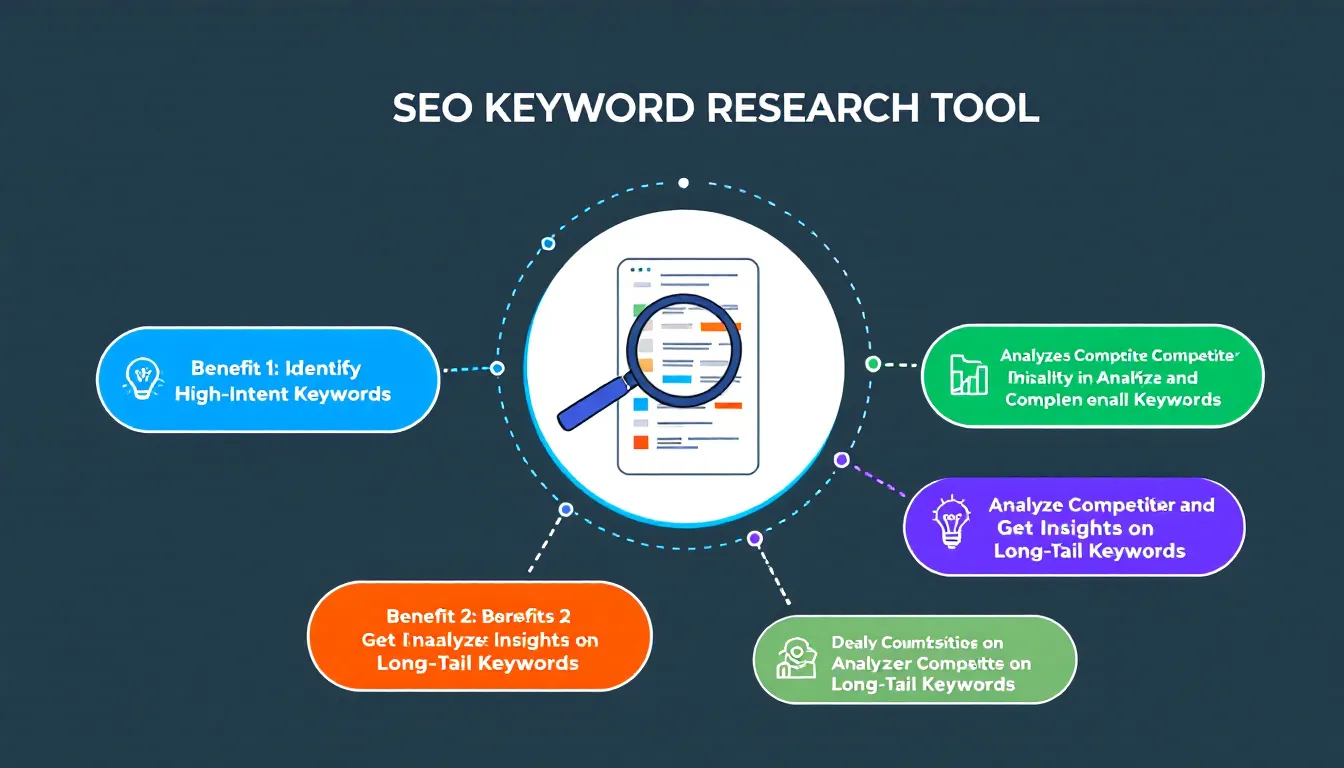Is this tool helpful?
How to Use the SEO Keyword Generator Effectively
Follow these steps to get the best results from the SEO Keyword Generator and create targeted, high-impact keyword lists for your blog:
- Enter your blog topic: Type the main subject of your blog. For example, you could use “Personal Productivity Hacks” or “Urban Gardening Tips”.
- Describe your target audience: Provide details about your ideal readers. For instance, “Young professionals seeking time management advice” or “City residents interested in balcony gardening”.
- Specify content focus (optional): Add specific subtopics or themes you’d like to highlight. Examples include “Pomodoro technique, Task prioritization” or “Container plants, Vertical garden setups”.
- List competitor keywords (optional): Enter keywords your competitors rank for that you want to consider. For example, “time blocking strategies, beginner gardening tips” or “efficient work habits, small space gardening”.
- Generate your SEO keywords: Click the button to receive a customized list of keywords tailored to your blog’s topic and audience.
- Review and use the keywords: Examine the suggested keywords to enhance your blog content. Copy them for easy integration into your posts, titles, meta descriptions, and image tags.
What Is the SEO Keyword Generator and How It Helps You
The SEO Keyword Generator is an online tool that creates a focused list of keywords based on your blog topic and the audience you want to reach. It helps you identify relevant search terms that improve your blog’s visibility on search engines, making it easier for potential readers to find your content.
By entering details about your blog, including optional inputs like content focus and competitor keywords, the tool analyzes and generates a blend of short-tail and long-tail keywords that align with current search trends and user interests. This approach saves you hours of manual research and boosts your SEO strategy with data-driven insights.
Benefits You Gain
- Save Time: Quickly get a list of targeted keywords without extensive manual research.
- Stay Relevant: Use up-to-date keywords that match your audience’s search behavior.
- Discover Opportunities: Find less competitive long-tail keywords that attract quality traffic.
- Customize Your Strategy: Tailor your keyword list by specifying content focus and competitor insights.
- Boost SEO Performance: Increase your chances of ranking higher and driving more organic visits.
Practical Use Cases for the SEO Keyword Generator
1. Crafting Content That Connects
If you run a blog about remote work tools targeted at freelance designers, inputting your topic and audience helps you find keywords like “best project management apps” and “freelance design productivity tips.” These keywords guide your content creation towards what your readers actually search for.
2. Expanding Your Blog Themes
A lifestyle blogger focusing on minimalism might use the tool to uncover keywords such as “decluttering checklists” or “minimalist wardrobe ideas for summer,” helping them to explore new, relevant topics their audience wants.
3. Enhancing Local SEO for Small Businesses
A local fitness coach aiming to attract clients in their city can enter keywords like “personal trainer in Chicago” and “outdoor yoga classes Chicago,” ensuring their blog and website content aligns with geographically relevant searches.
The Formula Behind the Keyword Selection
The tool considers multiple SEO factors to prioritize keywords. It uses a formula balancing search volume, topic relevance, competition, audience fit, and difficulty level:
$$ KeywordRelevance = \frac{(SearchVolume \times TopicRelevance) + (CompetitionScore \times AudienceMatch)}{DifficultyFactor} $$This formula ensures the keywords you get are not only popular but also a strategic fit for your blog, helping you target terms that improve your ranking potential without overwhelming competition.
Tips for Incorporating Keywords into Your Blog Content
- Use your primary keyword in the blog title and first paragraph.
- Include related keywords naturally within headings and body text.
- Add keywords in image alt tags and meta descriptions.
- Aim for a balance—avoid keyword stuffing to keep content readable.
- Focus on long-tail keywords to attract targeted readers with specific search intent.
Frequently Asked Questions About the SEO Keyword Generator
How often should I generate new keyword lists?
Use the tool when planning new content or updating existing posts. SEO trends change, so regular keyword updates keep your content fresh and visible.
Can I use these keywords for paid ads too?
Yes. These keywords fit paid campaigns by targeting relevant search terms, helping you reach the right audience and improve ad performance.
How many keywords should I focus on per post?
Choose one main keyword and 2-3 related keywords. This keeps your content focused and helps capture a wider range of search traffic.
Are long-tail keywords really effective?
Long-tail keywords usually have lower search volume but higher conversion rates because they match more specific search intents. They’re great for driving qualified traffic and are less competitive.
Important Disclaimer
The calculations, results, and content provided by our tools are not guaranteed to be accurate, complete, or reliable. Users are responsible for verifying and interpreting the results. Our content and tools may contain errors, biases, or inconsistencies. Do not enter personal data, sensitive information, or personally identifiable information in our web forms or tools. Such data entry violates our terms of service and may result in unauthorized disclosure to third parties. We reserve the right to save inputs and outputs from our tools for the purposes of error debugging, bias identification, and performance improvement. External companies providing AI models used in our tools may also save and process data in accordance with their own policies. By using our tools, you consent to this data collection and processing. We reserve the right to limit the usage of our tools based on current usability factors.







